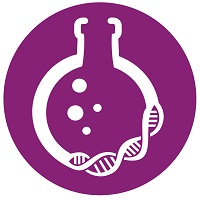Bioanalytics
Symposium: Using Mass Spec to Support PD/PK
Innovative Mass Spectrometry Strategies for Clinical Bioanalysis and Monitoring
Tuesday, November 11, 2025
10:30 AM - 11:00 AM CT
Location: 221 CD

Robin Kemperman, PhD (he/him/his)
Sr. Scientist
Children's Hospital of Philadelphia
Philadelphia, Pennsylvania
Speaker(s)
Bioanalytical innovations and translational science play a pivotal role in uncovering biological abnormalities and accelerating drug development through precise biomarker discovery and effective therapeutic monitoring. This presentation highlights two complementary projects that exemplify this integration, outlining both successes and bottlenecks in such workflows.
From a targeted pathway perspective, we present a novel liquid chromatography–tandem mass spectrometry (LC-MS/MS)–based ketone body panel developed for clinical application in mitochondrial disease diagnostics. By quantifying beta-hydroxybutyrate (BHB), acetoacetate (AcAc), and their ratio—as an indirect marker of the hepatic intramitochondrial NADH/NAD+ redox state—this assay provides a stable, accurate, and minimally invasive alternative to direct redox measurements. The inclusion of additional isomers, such as alpha-hydroxybutyrate (AHB), gamma-hydroxybutyrate (GHB), and beta-hydroxyisobutyrate (BHIB), broadens metabolic pathway coverage and enhances diagnostic precision. Rigorous analytical validation demonstrates excellent linearity, precision, and accuracy, supporting its implementation in high-complexity clinical laboratories for both drug development and therapeutic drug monitoring. Preliminary results suggest improved diagnostic performance of the BHB/AcAc ratio over previously used biomarkers, opening new avenues for reevaluating treatment plans and developing novel therapeutics.
In parallel, untargeted metabolomics using high-resolution mass spectrometry—specifically the Thermo Scientific Orbitrap IQ-X—was employed to gain a broader view of the metabolome. Spent media from control and ATP6 mutant cell cultures were analyzed to assess metabolite consumption and excretion profiles. Significant differences were observed in metabolites related to energy metabolism, the tricarboxylic acid (TCA) cycle, and amino acid metabolism. These alterations reflect the impact of mitochondrial dysfunction on cellular metabolism and provide valuable insight into potential drug targets, treatment optimization, and pharmacodynamic responses. Such data are essential for accelerating drug development by enabling early detection of metabolic dysregulation and informing dose and safety assessments.
Together, these studies demonstrate how integrating targeted LC-MS/MS bioanalysis with untargeted metabolomics can streamline the translation of laboratory discoveries into clinical practice—advancing drug development and enhancing therapeutic monitoring strategies.
From a targeted pathway perspective, we present a novel liquid chromatography–tandem mass spectrometry (LC-MS/MS)–based ketone body panel developed for clinical application in mitochondrial disease diagnostics. By quantifying beta-hydroxybutyrate (BHB), acetoacetate (AcAc), and their ratio—as an indirect marker of the hepatic intramitochondrial NADH/NAD+ redox state—this assay provides a stable, accurate, and minimally invasive alternative to direct redox measurements. The inclusion of additional isomers, such as alpha-hydroxybutyrate (AHB), gamma-hydroxybutyrate (GHB), and beta-hydroxyisobutyrate (BHIB), broadens metabolic pathway coverage and enhances diagnostic precision. Rigorous analytical validation demonstrates excellent linearity, precision, and accuracy, supporting its implementation in high-complexity clinical laboratories for both drug development and therapeutic drug monitoring. Preliminary results suggest improved diagnostic performance of the BHB/AcAc ratio over previously used biomarkers, opening new avenues for reevaluating treatment plans and developing novel therapeutics.
In parallel, untargeted metabolomics using high-resolution mass spectrometry—specifically the Thermo Scientific Orbitrap IQ-X—was employed to gain a broader view of the metabolome. Spent media from control and ATP6 mutant cell cultures were analyzed to assess metabolite consumption and excretion profiles. Significant differences were observed in metabolites related to energy metabolism, the tricarboxylic acid (TCA) cycle, and amino acid metabolism. These alterations reflect the impact of mitochondrial dysfunction on cellular metabolism and provide valuable insight into potential drug targets, treatment optimization, and pharmacodynamic responses. Such data are essential for accelerating drug development by enabling early detection of metabolic dysregulation and informing dose and safety assessments.
Together, these studies demonstrate how integrating targeted LC-MS/MS bioanalysis with untargeted metabolomics can streamline the translation of laboratory discoveries into clinical practice—advancing drug development and enhancing therapeutic monitoring strategies.
Learning Objectives:
- Upon completion, participants will be able to design and validate robust LC-MS/MS assays for clinical bioanalysis and drug development applications.
- Upon completion, participants will be able to interpret untargeted metabolomics data from high-resolution mass spectrometry to identify metabolic alterations and novel biomarkers.
- Upon completion, participants will be able to optimize therapeutic monitoring by applying both targeted and untargeted mass spectrometry approaches to assess metabolism.

